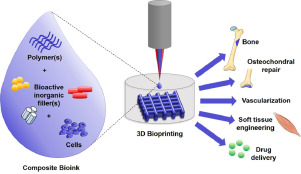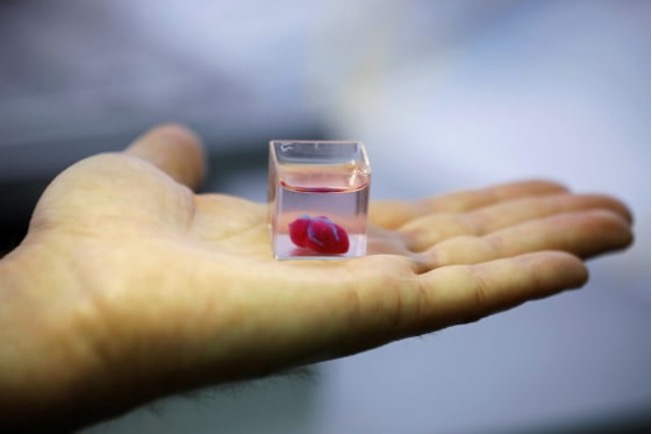Imagine a world where organ transplant waiting lists no longer exist. Where a failing heart, kidney or liver doesn’t lead to a possible death sentence and can be fixed with a simple immediate replacement. According to the World Health Organisation, cardiovascular disease is the leading cause of death worldwide, accounting for almost 15% of all deaths. For patients suffering from end-stage cardiovascular disease, often heart transplantation is the only available option. However, the demand for heart transplants is outweighed by the number of healthy hearts available.
Recent and Ongoing Developments in Bio-printing :
There have been multiple breakthroughs and developments recently that all contribute towards bringing us closer to functional bio-printed hearts.

- Bio-inks: Scientists have been developing advanced bio-inks that better mimic the properties of human heart tissues. Bio-inks are printable materials that can incorporate live cells in 3D and bioactive molecules for bioprinting, allowing for precise 3D placement of cells or molecules within the construct.
- Scaffolding for Blood Vessels: One of the biggest hurdles is replicating the complex vascular system of the heart. Without a proper network of blood vessels, bioprinted hearts would fail due to a lack of oxygen and nutrients. Researchers are making progress in engineering capillaries and larger vessels to support full organ function. Earlier in 2019, a team of scientists created 3D printed vascular networks that mimic the body’s nature passageways for blood, air, lymph, and other vital fluids. This innovation has cleared a major hurdle in printing functional human tissue and opened the pathway to complete 3D printing heart replacement organs.

- Miniature 3D-Printed Hearts: In 2019, researchers at Tel Aviv University successfully printed a tiny heart using human cells, complete with chambers and blood vessels. Although it lacked full functionality, this marked an essential step toward printing life-sized, beating hearts.
- Electrophysiological Control: Bioprinted heart tissue needs to be able to conduct electrical signals properly to enable synchronised contractions. Scientists are experimenting with specialised biomaterials that improve electrical conductivity within printed tissues, enhancing their ability to beat in a coordinated manner.
However, despite all these developments, there are several major obstacles that stand in the way of Bio-printed hearts being transplanted in the near future.
- Functionality & Longevity: Even though scientists have printed heart tissues, ensuring that these tissues can beat synchronously and sustain long-term function remains a challenge. Hearts must endure years of stress without degradation.
- Scalability & Precision: Printing a full-sized, fully functional heart that can integrate seamlessly with the human body requires extreme precision, biomimicry, and technological advancements beyond what we currently possess.
- Vascularisation & Nutrient Delivery: A fully printed heart needs an intricate vascular system that not only delivers oxygen and nutrients but also removes waste efficiently.
- Regulatory Approval: Like any new medical technology, bioprinted hearts must undergo extensive clinical trials to ensure safety and efficacy before becoming a standard treatment option. Ethical considerations and regulatory hurdles could slow down widespread implementation.
When can we expect the first Bio-printed heart transplant?
Experts predict that within the next 10-20 years, we may see the first clinical trials of bioprinted heart transplants. Initially, printed heart tissues might be used to repair damaged hearts, replace sections of heart muscle, or develop more realistic models for drug testing rather than replacing entire organs. Full organ transplants may take much longer.
While we’re not quite there yet, each scientific breakthrough brings us closer to a future where a patient in need of a heart transplant won’t have to wait—they can have one printed just for them.
References :
- Freeman, D. (2019). Israeli scientists create world’s first 3D-printed heart using human cells. [online] NBC News. Available at: https://www.nbcnews.com/mach/science/israeli-scientists-create-world-s-first-3d-printed-heart-using-ncna996031.
- Jacobsen, B. (n.d.). We Now Have 3D-Printed Human Hearts. [online] Future Proof. Available at: https://www.futuresplatform.com/blog/3d-printed-human-hearts.
This is a good blog, very engaging with a good backgroud to 3D bioprinting. You could improve your blog with an addition of your reflection on bioprinting, what made you write about this tipic? why is it interesting and what do you think could be the challange? You can widen your research a little bit more and provide references with hyperlinks and in text citations.